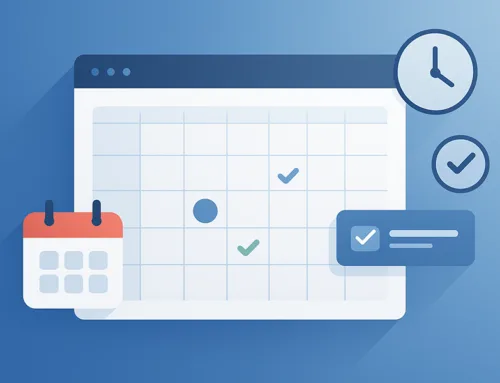Are you interested in improving your SEO and (OR) conversion rate?
Obviously, you are. Everyone in the marketing (or business) realm is.
The trouble is, not everyone has a clue how to go about it. The solution is really obvious: A/B testing. It’s efficient, cost-effective, and in the end, you will wind up with an answer to what works best for your website. However, the reason why A/B testing is not more popular, despite all the benefits it has to offer, is because useful tests are hard to put together. It’s perhaps even harder to figure out what to make of the results due to so many factors you need to take into account.
Then there is the way you interpret the results, which is where most people go wrong by oversimplifying things.
And I’m NOT just talking about Conversion A/B tests. I’m also referring to SEO A/B Tests…
So, there’s no need to wait till you get up to a minimum of 1000 monthly conversions to get started with split tests.
CRO and doing split tests is complex.
And running it for SEO benefits and search engines, instead of for users, is still an intricate matter.
Knowing what influence Content or SEO changes to your web page has had on Google organic traffic can be confusing to measure. This SEO for Korean sites campaign takes everything from SEO, target audience, and their search intent. Based on split tests, implementing the right set of proven SEO recommendations is a game-changer.
This is why we have put together a list of the five most common A/B testing mistakes and advice on how to avoid them.
1. A/B Tests for a Very Short Span of Time
Probably the most common mistake related to A/B testing. Whether you are short on time or in favour of a particular option, you will be tempted to end the test early. According to research conducted by Sumo, the higher the percentage of statistical significance, the lesser probability that the test result is a coincidence. In other words, the longer you test, the lower the chance the result is a fluke. This means that cutting your test short at 50% is pretty much pointless because it doesn’t really tell you anything.
And while 75 or 80 percent is way better, even that is too early to call it quits since the sample is still not large enough, as can be seen in this study conducted by CXL. The experts in the field maintain that you should end the test at 95%! This means there is only a 5% chance that the result of the test is random.
2. Random A/B Tests Implementation
The whole point of testing is to gather data and numbers, which will help you learn if the solution you are proposing actually works. The best way to test would be to treat testing as a scientific experiment, which it certainly is, and base it around a hypothesis. The hypothesis is an intended statement made based on very limited evidence you can establish or refute but can be used as a beginning point for further detailed study. Performing a completely random test will certainly produce results, but your goal is not just that. You also need to learn how and why something has worked so that you can fully understand it and apply it further down the road.
Of course, you won’t have all the data you want when you are putting together your hypothesis right away, but that’s what you are testing for: to gather more data and evidence. That way, you can figure out what, why, and how something works, determine its relevance, and ultimately – come up with better tests and hypotheses.
3. Not Learning from Previously Failed A/B Tests
Your A/B test hasn’t produced a lift? Good, that means you should keep doing further tests. According to CXL, they often perform as many as six different tests on the same page before they receive the kind of lift they were expecting. Instead of going and performing a new test on a different page, you should focus on analysing its data, and improving your theory, because there is a high chance that your theory is flawed and not the test. Tweak it, and then run the test again. Lather, rinse, repeat.
Another reason why your test has failed is because of the human nature of your audience. Sometimes, it’s hard to predict how your readers will behave. Plus, there are simply too many variables, which is why it’s almost impossible to know something in advance with 100% certainty. Each new test, even a failed one, serves as a piece of the puzzle as long as you interpret the data constructively.
4. Test Involving Overlapping Traffic
Running multiple tests on several different pages at once may seem like a clever way to cut down on the costs and time, but there are pitfalls involved. For instance, if the pages you are trying to test simultaneously have overlapping traffic, the tests will yield results that can be misleading or inconclusive. In other words, you will operate under a false assumption that the data gathered through this type of testing is accurate.
So what can you do? Well, you need to make sure that you have gotten the traffic distribution right. This means ensuring a 50/50 traffic split between pages A and B, as well as C and D. The same goes for any other page involved in the test.
5. Not Testing Continuously
If your test has been successful and you have managed to improve your conversion rate, the last thing you should do is stop testing. It’s all the more reason to keep on doing tests. Just because a particular solution has worked now doesn’t mean it will keep on working forever, and tests can help you keep an eye on the changes.
Also, by doing more tests, you will be able to hone your skills, come up with more sound hypotheses, more effective tests, and improve your conversion rates even more. Finally, you will gain a better insight into how your audience thinks and acts, which is essential for every successful marketing campaign.
Final Words
While testing is not without its challenges, it should be the cornerstone of your marketing efforts because it allows you to assume more control over running your own business instead of merely reacting to trends and your audience’s responses. Sure, it’s hard work, but it will definitely pay off.





